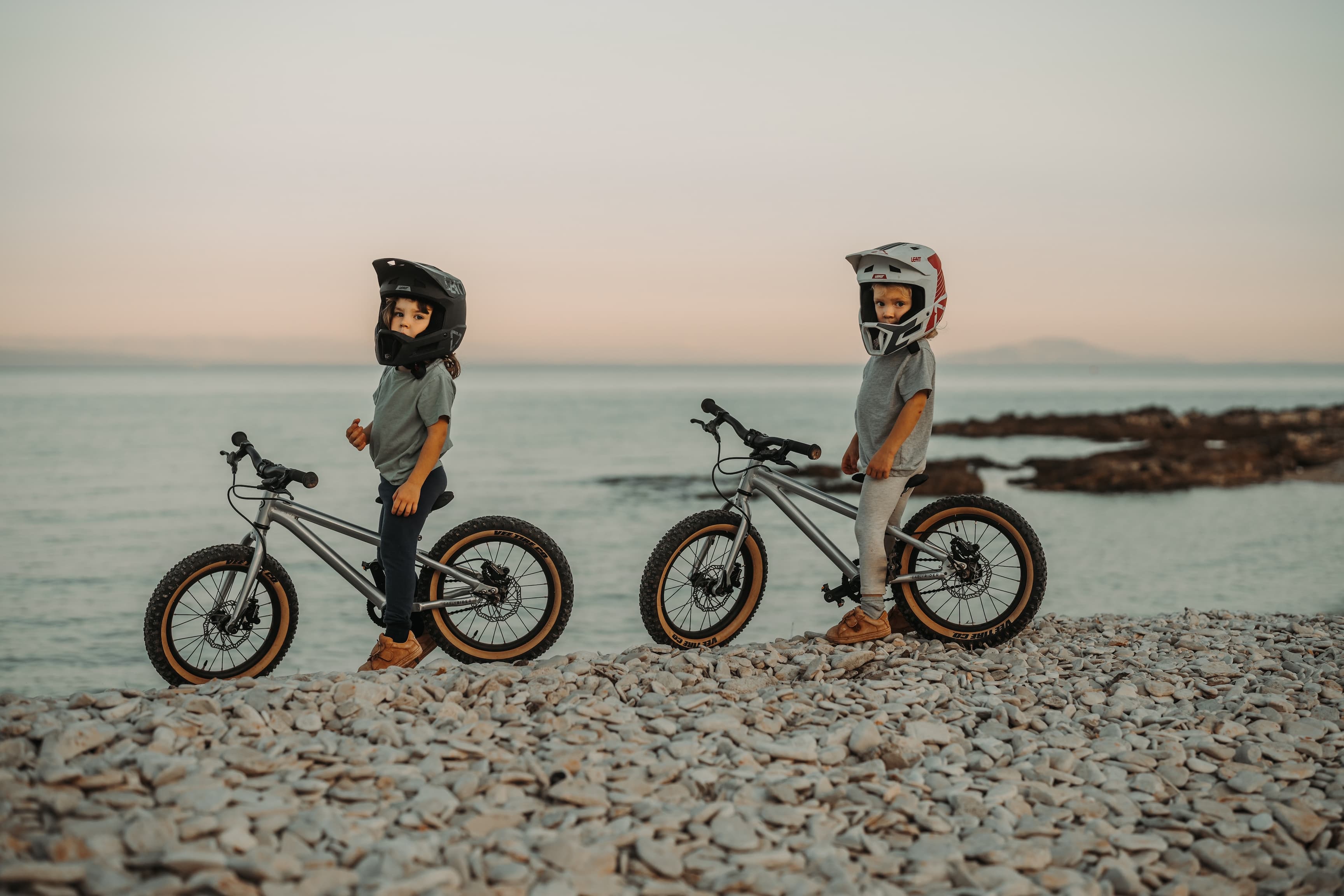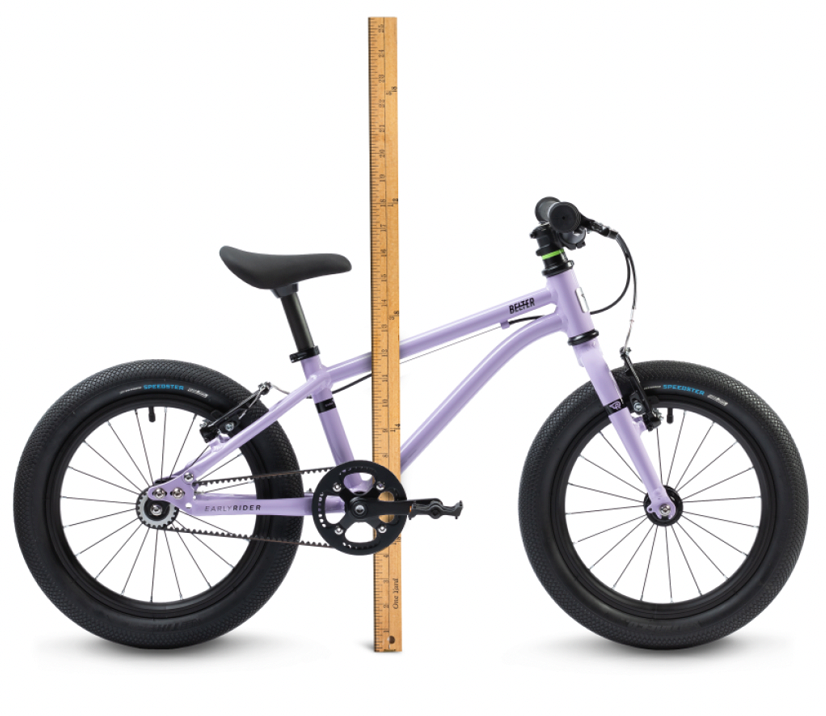
Height & inside leg height.
Early Rider is here to offer you a comprehensive guide to help you find the right size for your child.
You can pretty much disregard the age of your child when it comes to choosing the right size bike: HEIGHT and INSIDE LEG HEIGHT are much more important, as kids grow at such varying rates.
Current Bikes
| MODEL |
|---|
| Super Velio |
| Bella Velio |
| Lite 12 |
| Classic 12/14 |
| Bonsai 12 |
| Charger 12 |
| Bigfoot 12 |
| Belter 14 |
| Belter 16 |
| Belter 16 Auto |
| Belter 20 Auto |
| Belter 24 |
| Seeker 14 |
| Seeker 16 |
| Seeker 20 |
| Seeker 24 |
| Seeker X16 |
| Seeker X20 |
| Seeker X24 |
| Hellion X20 |
| Hellion X24 |
| MODEL | MINIMUM INSIDE LEG HEIGHT |
MINIMUM SEAT HEIGHT |
MAXIMUM SEAT HEIGHT |
AGE | WHEEL SIZE |
|---|---|---|---|---|---|
| Super Velio | 22cm / 8 5/8" | 20cm / 7 7/8" | 23.5cm / 9 1/4" | 10-24 Months | 8" |
| Bella Velio | 22cm / 8 5/8" | 21.5cm / 8 1/2" | 24.5cm / 9 5/8″ | 10-24 Months | 8" |
| Lite 12 | 30cm / 11 3/4" | 29.5cm / 11 3/5" | 38cm / 15" | 2 - 3.5 | 12" |
| Classic 12/14 | 31cm / 12 1/4" | 30.5cm / 12" | 39cm / 15 1/4" | 2 - 4 | 12/14" |
| Bonsai 12 | 33cm / 13" | 35cm / 13 7/9" | 45cm / 17 3/4" | 2 - 4 | 12" |
| Charger 12 | 33cm / 13" | 31cm / 12" | 40cm / 15 3/4" | 2 - 4 | 12" |
| Bigfoot 12 | 33cm / 13" | 31.5cm / 12 1/4" | 41.5cm / 16 1/4" | 2 - 4 | 12" |
| Belter 14 | 37cm / 14 3/5" | 39.5cm / 15 3/5" | 64cm / 25 3/16" * | 2.5 - 5 | 14" |
| Belter 16 | 41cm / 16 1/10" | 46cm / 18 1/10" | 64cm / 25 3/16" * | 3.5 - 6 | 16" |
| Belter 16 Auto | 41cm / 16 1/10" | 46cm / 18 1/10" | 64cm / 25 3/16" * | 3.5 - 6 | 16" |
| Belter 20 Auto | 50cm / 19 7/10" | 57cm / 22 2/5" | 70cm / 27 3/5" | 5.5 - 8 | 20" |
| Belter 24 | 58.5cm / 23" | 64.5cm / 25 2/5" | 81.5cm / 27" | 8 - 11 | 24" |
| Seeker 14 | 38cm / 15" | 40.5cm / 15 9/10" | 64cm / 25 3/16" * | 2.5 - 5 | 14" |
| Seeker 16 | 41cm / 16 1/10" | 47cm / 18 1/2" | 64cm / 25 3/16" * | 3.5 - 6 | 16" |
| Seeker 20 | 51cm / 20 1/10" | 58cm / 22 4/5" | 71cm / 28" | 5.5 - 8 | 20" |
| Seeker 24 | 60cm / 23 3/5" | 65.5cm / 26 4/5" | 82.5cm / 32 1/2" | 8 - 11 | 24" |
| Seeker X16 | 45cm / 17 3/4" | 46cm / 18 1/10" | 64cm / 25 3/16" * | 3.5 - 6 | 16" |
| Seeker X20 | 54cm / 21 1/4" | 57.5cm / 22 3/5" | 70cm / 27 3/5" | 5.5 - 8 | 20" |
| Seeker X24 | 62cm / 25 2/5" | 72cm / 28 3/10" | 88cm / 34 3/5" | 8 - 11 | 24" |
| Hellion X20 | 53cm / 21" | 54cm / 21 1/4" | 66cm / 26" | 4- 8 | 20" |
| Hellion X24 | 65cm / 25 3/4" | 70cm / 27 1/2" | 83cm / 32 3/4" | 7.5 - 11 | 24" |
* With secondary seatpost supplied.
MY24/25 Bikes
| MODEL |
|---|
| Belter 14 |
| Belter 16 |
| Belter 20 |
| Belter 24 |
| Seeker 14 |
| Seeker 16 |
| Seeker X16 |
| Seeker 20 |
| Seeker 24 |
| Hellion 16 |
| Hellion 20 |
| Hellion 24 |
| MODEL | MINIMUM INSIDE LEG HEIGHT |
MINIMUM SEAT HEIGHT |
MAXIMUM SEAT HEIGHT |
AGE | WHEEL SIZE |
|---|---|---|---|---|---|
| Belter 14 | 36.5cm / 14 1/4" | 40cm / 15 3/4" | 50cm / 19 1/2" | 2.5 - 5 | 14" |
| Belter 16 | 45cm / 17 3/4" | 47.5cm / 18 3/4" | - | 3.5 - 6 | 16" |
| Belter 20 | 52cm / 20 1/2" | 57.5cm / 22 3/4" | 69cm / 27" | 5.5 - 8 | 20" |
| Belter 24 | 64cm / 25 1/5" | 66.5cm / 26" | 69cm / 27" | 8 - 11 | 24" |
| Seeker 14 | 37cm / 14 1/2" | 41cm / 16" | 51cm / 20" | 2.5 - 5 | 14" |
| Seeker 16 | 45cm / 17 3/4" | 47.5cm / 18 3/4" | - | 3.5 - 6 | 16" |
| Seeker X16 | 45cm / 17 3/4" | 47.5cm / 18 3/4" | - | 3.5 - 6 | 16" |
| Seeker 20 | 54cm / 21 1/4" | 56cm / 22" | 71cm / 28" | 5.5 - 8 | 20" |
| Seeker 24 | 63cm / 24 3/4" | 67cm / 26 1/2" | 86.5cm / 34" | 8 - 11 | 24" |
| Hellion 16 | 43cm / 17" | 46.5cm / 18 1/4" | - | 3.5 - 6 | 16" |
| Hellion 20 | 54cm / 21 1/4" | 56cm / 22" | 68cm / 26 3/4" | 5.5 - 8 | 20" |
| Hellion 24 | 65cm / 25 1/2" | 67cm / 26 1/2 " | 81cm / 32" | 8 - 11 | 24" |
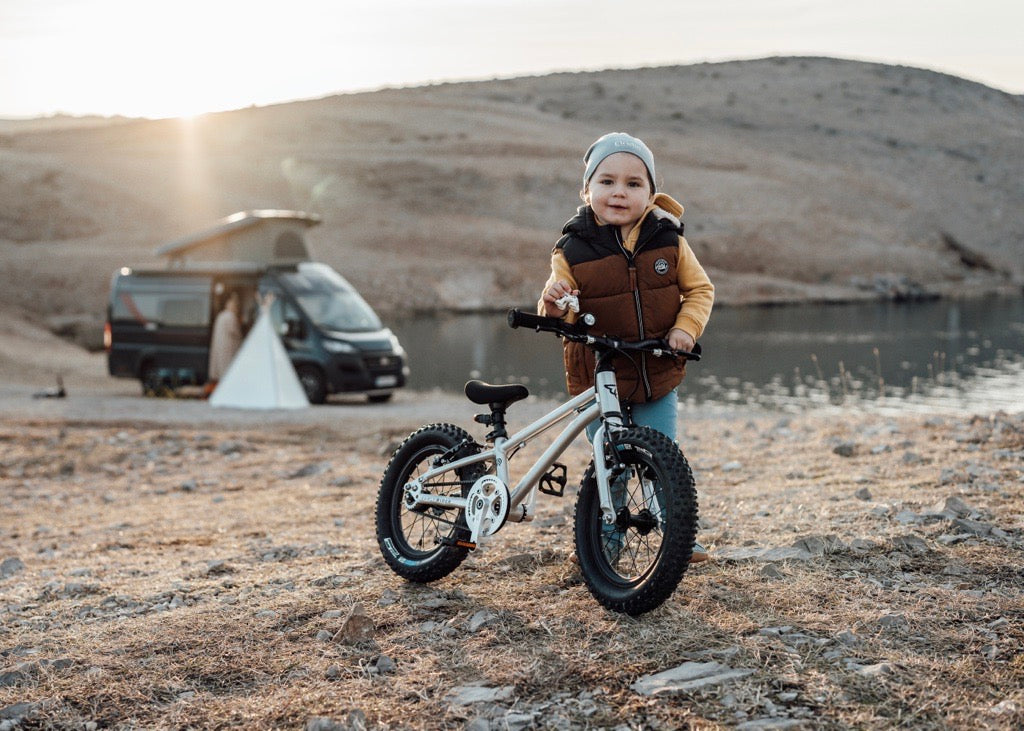
What if you child is in between sizes?
It’s usually best here to choose the smaller size. Why is that? Well, a larger bike will typically be harder for a child to steer, stop and start, especially where they might need to stand on their tiptoes to reach the floor. This larger bike might feel more intimidating and less comfortable, especially for less confident riders. As the feelings of control, security and confidence are key to an enjoyable cycling experience for kids, it’s clear to see why a smaller bike is likely to offer a better experience here if you’re unsure between sizes.The exception to this guidance would be that if the child is really on the cusp of the larger size, it might be a better idea because they’ll be able to enjoy riding it for much longer, as well as have a more efficient pedal stroke on the larger bike.
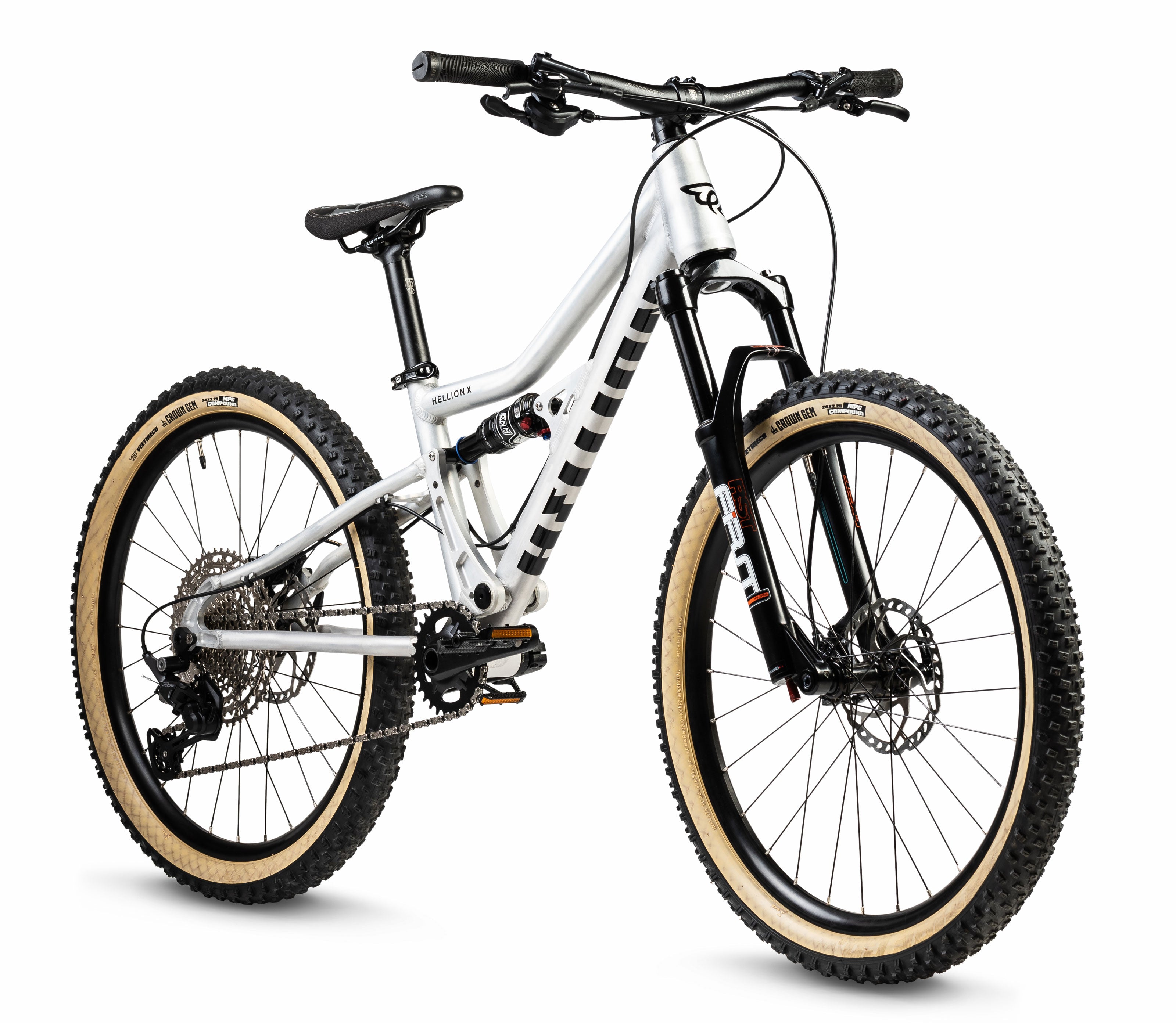
How long until a child outgrows their bike?
Of course no two children are the same or grow at the same rates, but we suggest that their bikes last an average of one to one and a half years before it’s outgrown. This is if it’s purchased when the child fits in the lower end of the sizing bracket. This might not seem like long at all, but thankfully our quality children’s bikes hold one of, if not the best, resale value.
We even have a dedicated Facebook page to pre-owned Early Rider bikes.
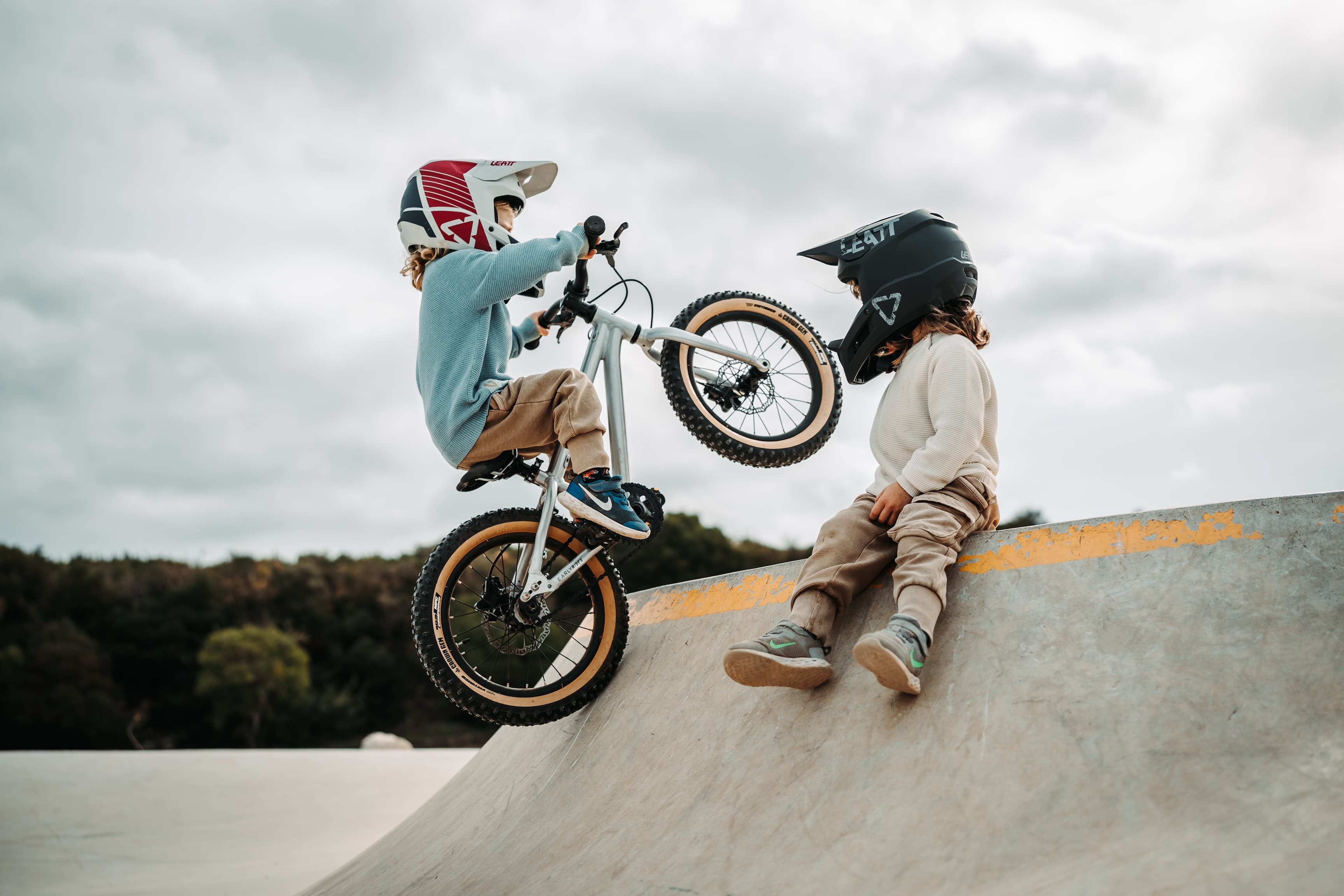
How a child's cycling skill can affect size
Interestingly, it’s not only your child’s measurements that can dictate which size will be best for them. Their skill level also has a bearing on what size and weight of bike will be best.A less confident or less skilled child might really benefit from a slightly smaller, more lightweight bicycle. This is because they tend to be easier for the child to handle and manoeuvre, as well as to get onto and dismount.Having said this, the most key part will still be getting the basic fit right, again for your child’s physical size, rather than age.



